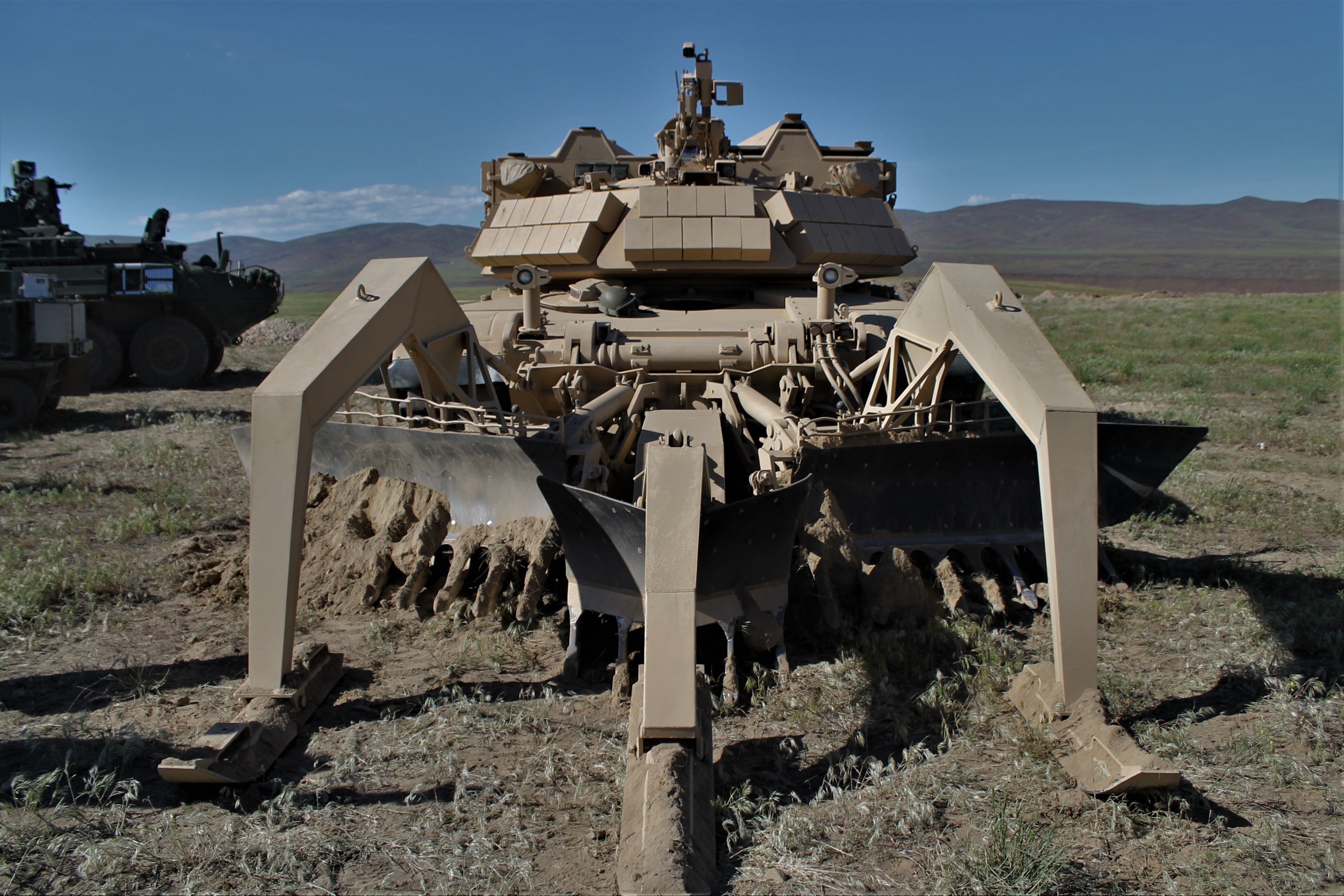WASHINGTON — The U.S. Army has adjusted its pursuit of three robotic combat vehicles of different sizes, instead moving forward with a single size that fits the mission needs and can keep up with crewed combat vehicles, according to the service’s program executive officer for ground combat systems.
“We don’t really need a light or a medium [RCV] as a standalone. What we need is a platform that, depending on the mission payloads you choose, would fill a role or another. So it’s really now about payload,” Maj. Gen. Glenn Dean told Defense News in an interview ahead of the Association of the U.S. Army’s annual conference.
“That was something that came out of our experimentation at Fort Cavazos [formerly Fort Hood, Texas], with the 1st Cavalry Division” last year, he said.
The Army had decided the heavy capability would be deferred because operating a large-caliber, direct-fire weapon remotely was a “very, very difficult problem,” he noted. The Army did evaluate a heavy capability using old M1113 vehicles.
The service entered the experiment with surrogate light and medium robotic combat vehicles, thinking the RCV light, medium and heavy “were distinct mission roles with distinct platforms,” Dean said.
But “the outcome of the experiment [found] we really need a modular platform that kind of falls in between the two [light and medium],” he added. “It can be a little bit bigger than we were allowing the light to be, but it doesn’t need to be as big as we were expecting the medium to be because what we found is the available options for payloads that exist in the defense industry right now could … fit on that smaller platform.”
RELATED

The size of the platform allows the RCV to be sling-loaded from a helicopter and transported using palletized load systems. There is also an objective requirement to fit inside a CH-47 Chinook cargo helicopter, Dean noted.
In September, the Army chose four companies to design and build prototypes for the new RCV: McQ, Textron Systems, General Dynamics Land Systems and Oshkosh Defense.
The companies have until August 2024 to build the prototypes and deliver them to the Army for testing and evaluation with soldiers. This marks the first phase of a competition planned to eventually become a program of record.
The companies will first focus on reconnaissance payloads, Dean said. The Army wants each design to incorporate the Common Remotely Operated Weapon Station-Javelin as well as a tethered drone of each company’s choice.
The Army is expected to choose a single winner in the second phase of the competition in fiscal 2025 to deliver up to nine prototypes the following year. The service has a production decision slated for FY27; fielding to the first unit is set for FY28.
The Army will eventually choose more payloads, Dean added. Some other capabilities include smoke to provide screening; electronic warfare technology; counter-drone systems; and chemical, biological, radiological and nuclear sensor detection.
“Imagine the RCV is a robot with a deck, and then what we put on the deck defines what it does,” Dean said. “Of course it’s not just the robot: It’s the communication system, it’s what we call the warrior-machine interface. That’s how the soldiers operate it remotely. And then that’s got to be packaged inside a control vehicle.”
The Army has learned a great deal from QinetiQ-built surrogate RCV-Light systems that went through two National Training Center rotations at Fort Irwin, California, Dean said. The surrogates were used by the opposing force — the 11th Armored Cavalry Regiment, nicknamed Black Horse — at the center.
“Black Horse has prove[d] tremendously adaptive in how they have employed the robots,” Dean said. “They had robots leading flank attacks with smoke and electronic warfare all employed at the same time. They’ve used them for an economy of force, and we had two robots holding off an entire U.S. infantry company and performing very successfully.”
Lessons from the experimentation are helping the service map out how it might use its robotic capability, “and that ultimately may adjust some of the concepts and some of the requirements that we pursue,” Dean added.
Simultaneously, the Army’s Combat Capabilities Development Command is experimenting on payload options using the service’s Squad Multipurpose Equipment Transport robotic vehicle.
While the Army is pursuing the RCV for heavy maneuver forces, that Squad Multipurpose Equipment Transport vehicle could still be the robot of choice for lighter formations, Dean said. The robotic combat vehicle can keep up with Strykers and Bradleys, whereas the transport vehicle might struggle in the upper speed and range required for those formations.
Squad Multipurpose Equipment Transport “is a very capable, small platform, and we’re seeing a lot of value with experimentation,” Dean noted.
Jen Judson is an award-winning journalist covering land warfare for Defense News. She has also worked for Politico and Inside Defense. She holds a Master of Science degree in journalism from Boston University and a Bachelor of Arts degree from Kenyon College.








